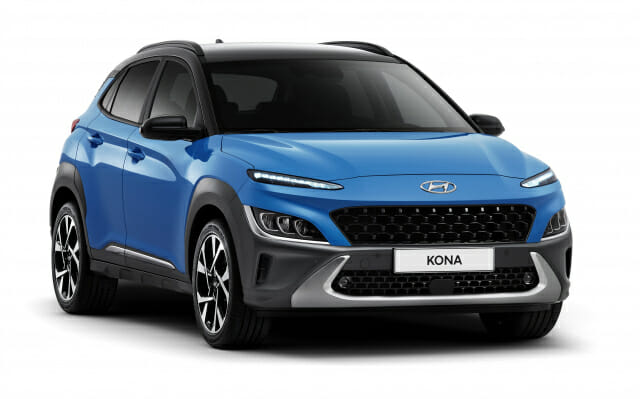
Last year, due to the spread of Corona 19, the automobile industry’s production and export volume decreased to double digits, but domestic sales volume increased slightly due to the effect of individual consumption tax cuts and new car launches.
It was a year in which the supply of eco-friendly cars sharply expanded, breaking record records in both domestic and export sales.
According to the Ministry of Trade, Industry and Energy on the 14th, it was tentatively calculated that production in the automobile industry declined 11.2%, exports 21.4%, and exports 13.0% last year. During the same period, domestic sales increased 5.8%.

Old production and export, recovery from the second half… SUV still preferred
Last year, the total production of automobiles was 3.15 million. Due to the contraction in sales due to the spread of Corona 19 and a disruption in the procurement of major parts, production has decreased significantly. In the first half of the year, production decreased by 19.8%, while in the second half of the new car export effect, production decreased slightly by 2.2%.
However, during the same period, the car production ranking by country rose from 7th to 5th. It is explained that, compared to the world’s top 10 producers, it showed the smallest decline except for China.
Last year, automobile exports continued to decline 33.9% in the first half and 8.1% in the second half. The total number of exports decreased by 21.4% to 1.89 million units. Exports decreased by 27.3% in the first half of the year, converted to an increase of 1.5% in the second half, totaling $37.73 billion (about 41,155.4 billion won).

As for the export share, sports utility vehicles (SUVs) expanded to 71.8%, leading to higher added value of all exports. The export price per 10,000 units of exports increased 10.4% from 180 million dollars (about 197.8 billion won) to 200 million dollars (about 2198 billion won).
The domestic sales volume broke a record record of 1.89 million units, an increase of 5.8% due to the government’s policies to revitalize domestic demand, such as lowering the opening tax, and the effects of various new car launches. The domestic sales volume, which decreased by 16% in January-February, increased by 70% (March-June) and 30% (July-December) after the opening tax cut.
Domestic car sales accounted for more than half (52.3%) of sales of passenger cars as demand for SUVs such as Palisade, Sorento, and Tucson continued to increase. Imports sales volume increased by 9.8% year-on-year to 290,000 units due to the increase in sales of branded cars in the US, Germany and Sweden.

The proportion of eco-friendly cars domestically exceeded 10%… The rise of major exports of electric vehicles
Domestic sales of eco-friendly vehicles increased 58.7% year-on-year to 227,000 units, and exports increased 6.8% to 276,000 units. Both domestic and export are record highs.
In particular, the proportion of eco-friendly car sales in the domestic market accounted for 12% of all car sales, exceeding 10% for the first time. Domestic sales volume increased in all models, including hybrid (HEV), electric vehicle (BEV), plug-in hybrid (PHEV), and hydrogen electric vehicle.
The number of eco-friendly cars exported was 276,000, an increase of 6.8% from the previous year. The share of exports recorded 19.1% of the total exports of passenger cars. During the same period, the number of units was also calculated at 14.7%.
It is evaluated that electric vehicles, which recorded an export growth rate of 60.1%, have emerged as the flagship export vehicle. By model, Hyundai’s’Kona Electric’ increased 43.6%, Kia’s’Niro EV’ increased by 191.9%,’Niro PHEV’ increased by 25.8%, and Hyundai’s’Nexo’ increased by 26.3%, leading to strong exports.

Auto parts exports fell 17.2% year-on-year to $18.67 billion (about 20.53 trillion won). The auto parts industry was hit by a contraction in global demand due to the spread of the corona, accumulation of inventory due to plant shutdowns in the first half, and a decrease in exports to local factories in the US, EU, and Latin America.
Meanwhile, the automobile industry’s production, domestic demand, and exports declined 12.0%, 6.0%, and 14.6%, respectively, compared to the same month last month. During the same period, exports also decreased by 4.3%. Domestic sales of eco-friendly cars increased by 62.0%, but exports decreased by 16.3%.
Related Articles

[CES 2021] Breaking stereotypes, new technologies gathered

Last month, 2,7091 units of the 5th class in the metropolitan area were detected… 70% less

Excluding exhaust gas inspection and manipulating measured values… 35 車 inspection stations found

Purchase subsidies and charging infrastructure support for companies that convert electricity and hydrogen
An official from the Ministry of Industry said, “The decrease in production was due to the partial strike of the Kia Motors union and the construction of the factory line to prepare for the launch of new cars such as Hyundai Motor’s’Ioniq 5′.” It has an effect on sales,” he explained.
“The reason that automobile exports fell last month is because global automobile demand has contracted due to the re-proliferation of corona in major countries such as Europe and the Middle East.” I did,” he added.
